Ryan Hall's Blog, page 362
August 24, 2015
Runners: Why You Should Add Hemp to Your Diet
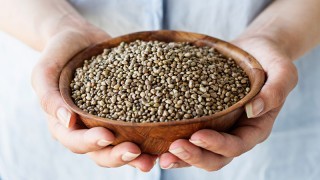
Photo: Shutterstock.com
This article first appeared on Triathlete.
While once an obscure food confined to hippie enclaves and badgered by constant pot puns, hemp is undeniably surging in popularity. Data from the Hemp Industries Association show that sales of hemp food have grown by about 24 percent in recent years. You can now find sachets of hemp seeds in megamarts, hemp protein in smoothie joints and hemp-infused granola bars in office vending machines. And that’s a good thing considering that the various guises of hemp food offer athletes plenty of nutritional benefits that prove they are worth the hype. Here’s how to take advantage of the high-flying properties of hemp. (Sorry, we couldn’t resist.)
Hemp seeds
Also called hemp hearts, these delicious little nuggets taste like a lovechild of sunflower seeds and pine nuts. But it’s their nutritional résumé that really sets them apart. Most notably, they deliver more muscle-friendly protein than that found in other seeds like flax and sunflower—about 10 grams in a 3-tablespoon serving. Their cornucopia of nutrients also includes laudable amounts of immune-enhancing zinc and energy-boosting iron.
Sneak more in: Salads, yogurt, soups, roasted vegetables and oatmeal will become instantly better with a generous sprinkle of these super seeds.
Hemp oil
Made by squeezing hemp seeds to the point where they release their verdant juice, hemp oil has a not unpleasant vegetal flavor making it a nice alternative to olive oil. Nutritionally, hemp oil delivers an ideal ratio of essential omega-6 and omega-3 fatty acids that helps fight inflammation in the body, which offers up heart-health benefits and may hasten exercise recovery.
Sneak more in: The delicate fats in hemp oil should not be heated so instead use it in salad dressings, pesto and dips.
Hemp protein powder
Offering up a concentrated source of plant-based protein to support your training, hemp protein powder is made by milling hemp seeds into a powder. Based on production methods, brands will contain various levels of protein and dietary fiber. Since hemp is considered a so-called “complete protein” because it contains all the essential amino acids, it is useful for repairing and building lean body mass in both vegetarians and carnivores.
Sneak more in: Whirl it into your smoothies or try mixing hemp powder into pancake or baked good batter for a protein boost.
Hemp milk
Up-and-coming hemp milk is gleaned by blending hemp seeds with water to produce a dairy-free milk alternative with earthy-nutty flavor. Lovers of almond milk should take note that the hemp variety contains higher amounts of protein and omega fatty acids. Most are also fortified with bone-building calcium. Still, consider opting for versions labeled “unsweetened” to keep your sugar intake in check.
Sneak more in: Use hemp milk to float your cereal in, as a liquid base for post-training smoothies, or mixed with cold-brewed coffee.
High Note: Worried about suffering Taco Bell cravings after a hemp smoothie? Don’t be. Hemp is a different variety of cannabis, so it doesn’t trigger munchies or positive drug tests.
Hemp Products
Manitoba Harvest Hemp Pro 70
($30, Manitobaharvest.com)
A lofty 20 grams of high-quality protein to show your muscles some love.
Nutiva Hemp Oil
($9, Nutiva.com)
Cold-pressed from organic hemp seeds to maximize the nutritional goodness.
Tempt Hemp Yogurt
($4.59, Livingharvest.com)
For a perfect post-workout treat, top this high-protein cultured delight with some granola. The fruit flavors contain actual fruit.
Navitas Naturals Hemp Seeds
($7, Navitasnaturals.com)
Sourced from organic family farms in Canada, you’ll always want to have a bag of these nutritious nuggets in your pantry.
KIND Strong bars
($1.79, Kindsnacks.com)
Hemp seeds help elevate the protein numbers in these delicious savory bars.
The post Runners: Why You Should Add Hemp to Your Diet appeared first on Competitor.com.
Katherine Hopper: 5 Ways Runners Can Beat the Heat
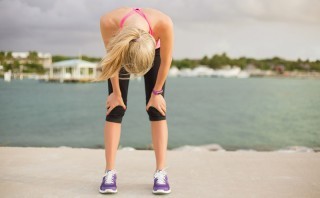
Photo: Shutterstock.com
I experienced an unfortunate case of exertional heat stroke at the 2014 Boston Marathon. After running the marathon in 3 hours and 40 minutes, five minutes off my goal time, my body temperature was 106.8 degrees when they checked it in the finish line medical tent. This body temperature could have been lethal if the medical personnel hadn’t immediately submerged me in a giant ice bath.
It scared the heck out of me. Although I was fine in the long term, the nightmare motivated me to research ways to run smarter in the heat and keep my cool on future runs. My case was extreme, but it’s still important to adjust your running habits to account for warmer temperatures in order to stay healthy and happy.
Here are my five go-to tips for surviving dog days of summer runs.
(Editor’s Note: It’s important to experiment with what works best for you.)
Drink Up!
Drink 12-20 ounces of water 30-60 minutes prior to your run—make it cool or cold if you can. Plan to drink about six ounces of water for every 20 minutes of running. Strongly consider bringing an electrolyte beverage or salty snack if you’re planning on running for longer than 60 minutes. In the hot weather months, I like to weigh myself before and after my runs and drink about 16 ounces of water for every pound lost on the run.
Timing is Everything
Avoid running in the hot mid-day sun. Avoid starting your run between 10am and 4pm. Set up morning running dates with friends to keep yourself accountable if you’re not usually a morning runner.
Dress Appropriately
Pick out loose-fitting running clothes made of technical fabrics. Avoid running in cotton, which doesn’t wick moisture well. Wear a visor or well-ventilated hat to keep the sun off of your face. Slather on sweat-proof sunscreen. Choose sunglasses with 100% UV protection.
Switch up Your Route
Choose a shaded trail run instead of your usual sunny road run. The shade will help cool your skin and allow for more efficient sweat evaporation and cooling. If you don’t have access to a shaded outdoor route, consider running on the treadmill.
Don’t be so Hard on Yourself
Adjust your pace according to how your body feels. Don’t feel guilty for slowing down when it’s warm outside. Ideal running temperatures are around 50-55 degrees and every five degree increase in temperature above 60 degrees can slow your pace by as much as 20-30 seconds per mile. If running in a warm environment is new to you, it can take up to two weeks for your body to acclimate.
The most important guideline for running in the heat is to listen to your body. If you start to feel dizzy or light headed, have cramps or chills, or suddenly stop sweating, it’s time to stop running. These may be early symptoms of heat illness and it’s not worth pushing through because these can quickly progress to more serious symptoms.
Stay cool!
The post Katherine Hopper: 5 Ways Runners Can Beat the Heat appeared first on Competitor.com.
Photos: 2015 Leadville Trail 100
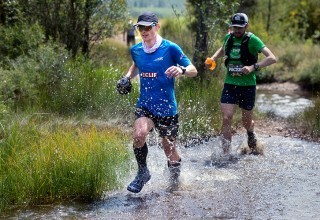
Ian Sharman won the Leadville Trail 100 on Aug. 22 for the second time in three years, crossing the finish line in 16:33:54. The Brit who lives in Bend, Ore., held off early challenges from Gustavo Reyes and Michael Aish and finished well ahead of second-place finisher Kyle Pietari of Denver, who crossed in 18:16:04. Liza Howard, of San Antonio, Texas, also won her second Leadville 100 title, finishing tops among the women’s field and sixth overall in 19:34:09. Kara Henry (Boulder, Colo.) was second among the women, finishing in 19:54:08.
Here are photos from the epic, high-altitude race, taken by Glen Delman Photography.
Photo Gallery
1 of {count}
Back to Start
View Larger Image
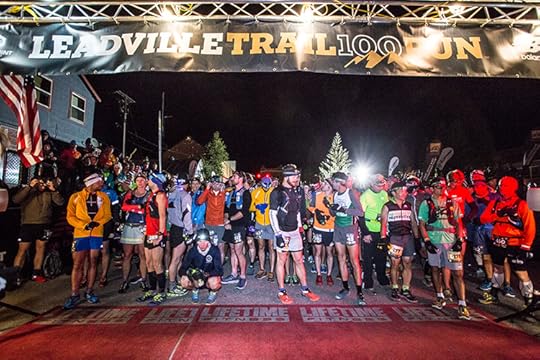
More than 650 runners from 47 states and 26 countries toed the starting line for this year's race in anticipation of the 4 a.m. start in the historic mining town. Photo: Glen Delman Photography
View Larger Image

Family, friends, crew and fans watch as runners head out near mile 6 of the race. Photo: Glen Delman Photography
View Larger Image

Runners run along Turquoise Lake heading to the first aid station near the 13-mile mark. Photo: Glen Delman Photography
View Larger Image
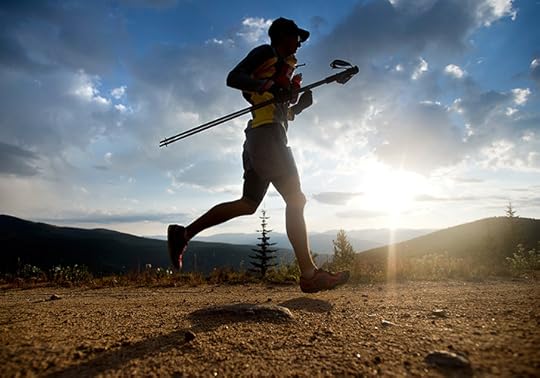
Roughly half of the runners in the race used trekking poles, like this runner on the Sugarloaf summit on mile 17. Photo: Glen Delman Photography
View Larger Image

Argetina's Gustavo Reyes bolted to an early lead, opening up a 6-minute gap on the rest of the field by the first aid station and opening that up to 12 minutes by the 40-mile mark. Photo: Glen Delman Photography
View Larger Image
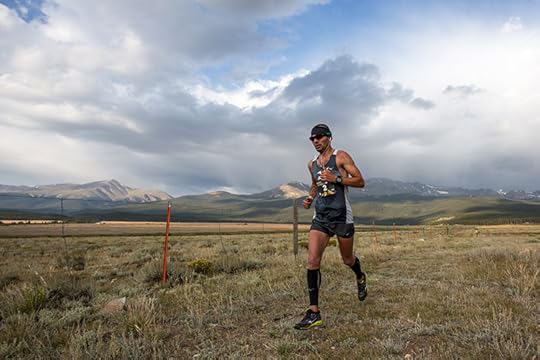
Denver's Michael Aish, a two-time New Zealand Olympian who finished third and second at Leadville the past two years, was one of the early leaders (seen here at mile 25). Photo: Glen Delman Photography
View Larger Image
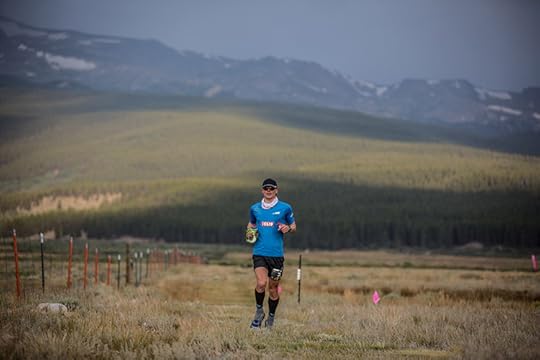
Crafty and confident, Ian Sharman started fast but conservatively compared to Reyes and Aish. Photo: Glen Delman Photography
View Larger Image
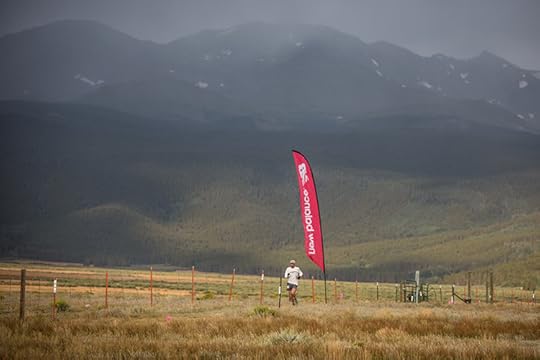
A light smoky haze, due to the wildfires burning in the Pacific Northwest, was present most of the day over the Leadville course, like here at mile 25. Photo: Glen Delman Photography
View Larger Image

The most challenging point of the course is 12,600-foot Hope Pass, which runners must tackle twice in the span of 20 miles midway through the course. Photo: Glen Delman Photography
View Larger Image

Hope Pass is entirely exposed, leaving some runners to suffer in the hot sun. Here, Ian Sharman is on the descent. Photo: Glen Delman Photography
View Larger Image
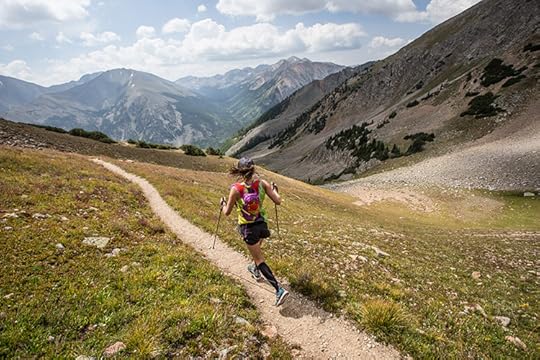
Kara Henry surged in the early miles of the race and had about a 10-minute lead as she made her first trip over Hope Pass. Photo: Glen Delman Photography
View Larger Image
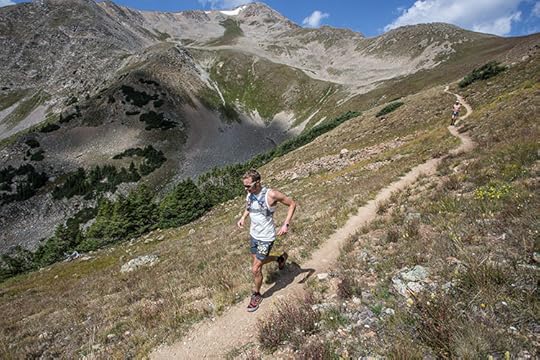
Zach King of Denver cruises over Hope Pass. He eventually finished 28th overall, third in the men's 20-29 age group. Photo: Glen Delman Photography
View Larger Image
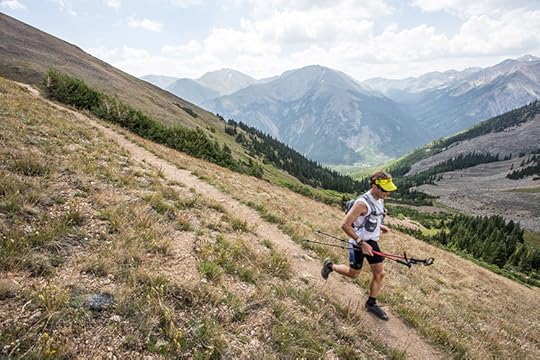
Since it's an out-and-back course, Hope Pass was conquered twice by all finishers. Photo: Glen Delman Photography
View Larger Image
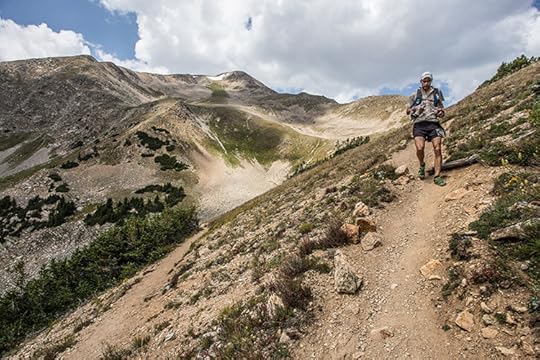
Hope Pass. Photo: Glen Delman Photography
View Larger Image

Hope Pass. Photo: Glen Delman Photography
View Larger Image
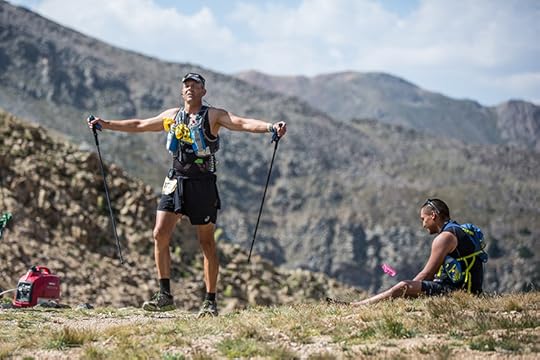
At the top of Hope Pass, some runners celebrate and some sit down to take a breather. Photo: Glen Delman Photography
View Larger Image
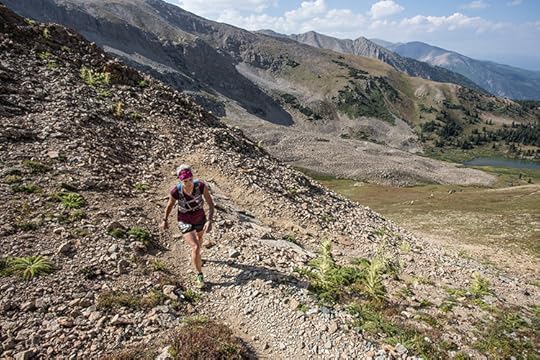
The approach to Hope Pass is grueling. Photo: Glen Delman Photography
View Larger Image
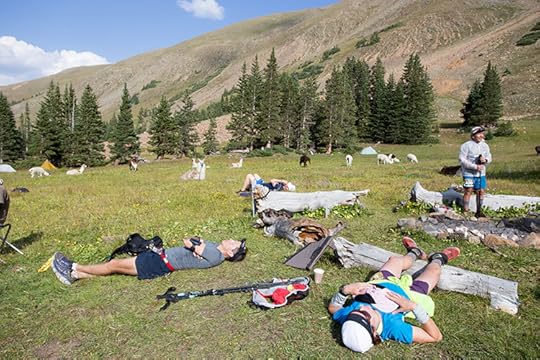
Runners take a moment to rest at the "Hopeless" aid station, a volunteer-based aid station near the top of Hope Pass. Photo: Glen Delman Photography
View Larger Image

Runners wade through Lake Creek twice during the race, once just after leaving Twin Lakes at the 40-mile aid station and again when they return to Twin Lakes at mile 60. Photo: Glen Delman Photography
View Larger Image

By the time he crossed the creeek and headed back into Twin Lakes at mile 58, Ian Sharman had a 6-minute lead on Michael Aish. Photo: Glen Delman Photography
View Larger Image

The stream crossing at mile 58. Photo: Glen Delman Photography
View Larger Image
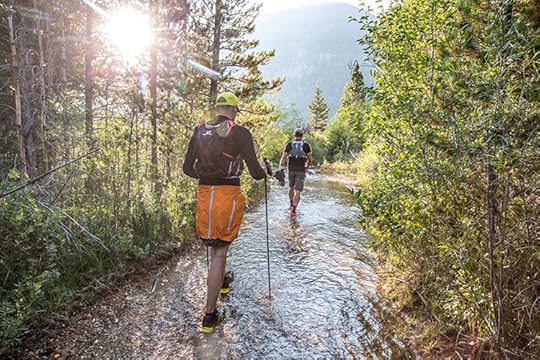
Mile 59. Photo: Glen Delman Photography
View Larger Image
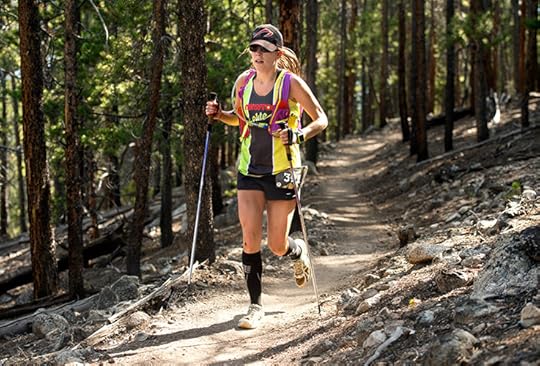
Kara Henry took the lead in the women's race and increased the margin to as much as 12 minutes at the 50-mile turnaround point. Photo: Glen Delman Photography
View Larger Image
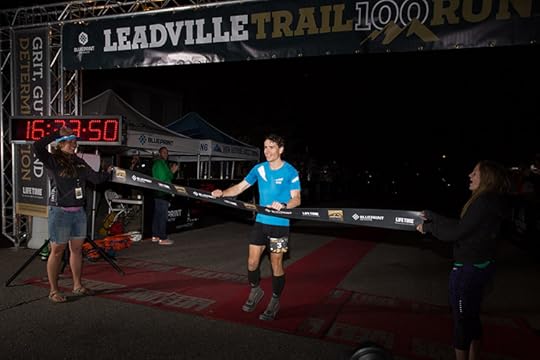
Ian Sharman broke the tape just after 8:30 p.m. local time to earn his second Leadville 100 title in three years. Photo: Glen Delman Photography
View Larger Image
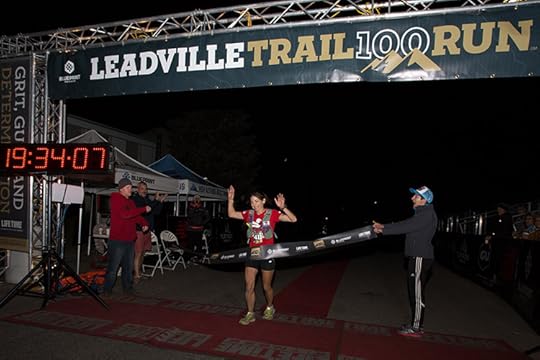
Liza Howard finished just after 11:30 p.m. local time with a 20-minute cushion over runner-up Kara Henry. Photo: Glen Delman Photography
View Larger Image
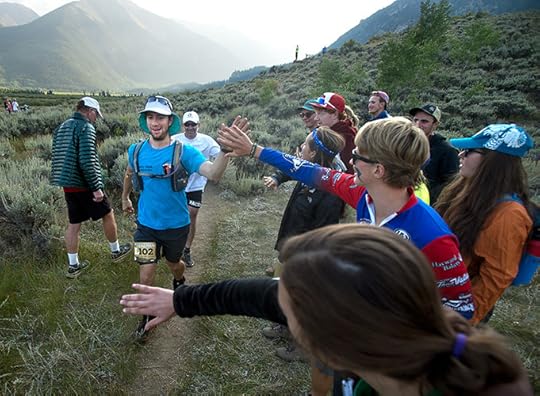
Jaimie Azuaje of Colorado Springs was 89th overall in 25:58:46. Photo: Glen Delman Photography
View Larger Image

Photo: Glen Delman Photography
View Larger Image
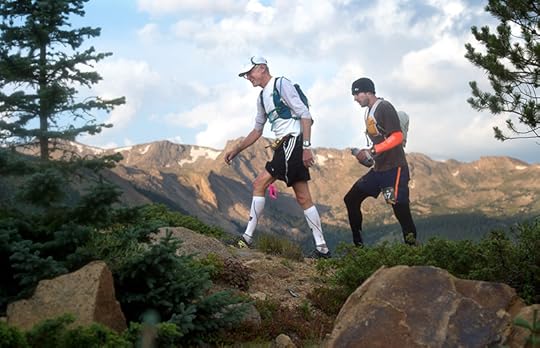
Photo: Glen Delman Photography
View Larger Image
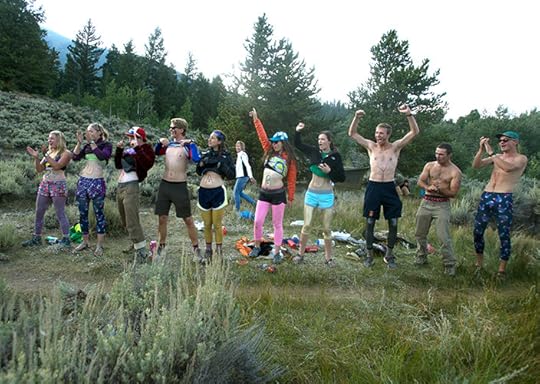
At the Twin Lakes aid station. Photo: Glen Delman Photography
View Larger Image

Micah Morgan of Peyton, Colo., finished 44th overall in 23:49:22. Photo: Glen Delman Photography
View Larger Image
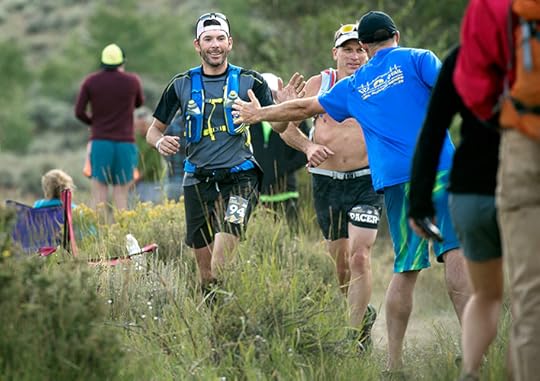
Tyler Bucklin of Conrad, Mont., high-fives a spectator during his run. Bucklin wound up 70th overall in 24:45:24. Photo: Glen Delman Photography
Related Galleries
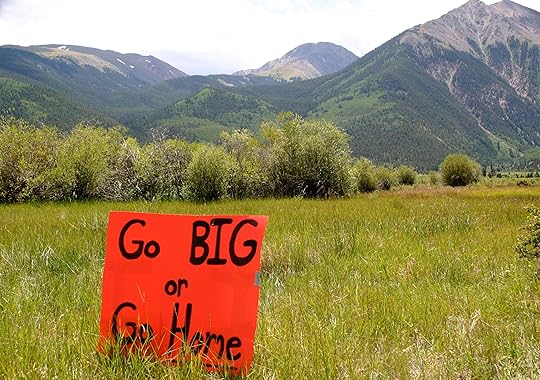
Leadville Trail 100

More Galleries
The post Photos: 2015 Leadville Trail 100 appeared first on Competitor.com.
Emily Infeld Wins 10,000m Bronze Medal At World Championships
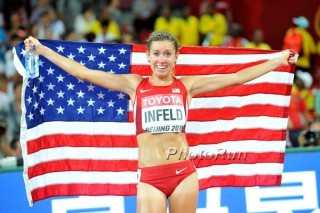
Emily Infeld took the first U.S. medal in the 10,000m at the world championships since Kara Goucher in 2007. Photo: PhotoRun.net
In a thrilling last lap charge to the finish, American Emily Infeld, who trains with Jerry Schumacher’s Nike Bowerman Track Club in Portland, Ore., snuck past teammate and reigning national champion Molly Huddle on the inside lane to snag the bronze medal in the 10,000-meter run at the IAAF World Championships on Monday night in Beijing, China. It was only the third 10,000 of the 25-year-old Infeld’s career. She is the first U.S. medalist in the event since Kara Goucher took bronze in 2007 (n.b. Goucher is likely to be upgraded to silver following Elvan Abeylegesse’s recent positive doping test).
“I feel like I could medal, and I just ran through the line and I feel a little guilty because I feel like Molly let up a little,” Infeld told Race Results Weekly. “I don’t think she realized how close I was.”
Infield crossed the finish line in 31:43.49, just ahead of Huddle, who took fourth in 31:43.58. Infeld’s BTC teammate and American record holder Shalane Flanagan was sixth in 31:46.23. Kenya’s Vivian Cheruiyot (31:41.33) outkicked Ethiopia’s Gelete Burka of Ethiopia (31:41.77) to win gold. After a slow start at 5K (16:11), there were 10 women still in contention with a mile to go. At the bell, it was a free for all with 8 women in the hunt for one of the three medals.
Huddle thought she had the bronze wrapped up and threw her hands up in the air just before the finish line—and that’s when Infeld darted past her.
“That last half-step I just let up too much,” Huddle told Race Results Weekly afterward. “Emily was right there the whole time, with just more momentum and she got that bronze. This will take a long time to get over.”
In other Monday night action, Kenyan Ezekiel Kemboi continued his global dominance in the steeplechase, capturing gold in 8:11.28. It was the 33-year-old’s fourth straight world title in the event, in addition to Olympic golds in 2004 and 2012. His Kenyan teammates rounded out the medal stand, and took fourth place as well for good measure.
American Dan Huling passed his Nike Bowerman Track Club teammate and American record holder Evan Jager right before the finish, clocking 8:14.39 to take fifth. Jagger was sixth in 8:15.47.
The post Emily Infeld Wins 10,000m Bronze Medal At World Championships appeared first on Competitor.com.
August 23, 2015
Gear We Love: August 2015
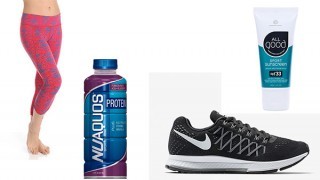
As the summer winds down, our editors keep logging miles—and finding awesome gear and apparel in the process. Here’s what we’re fond of this month.
RELATED: Gear We Love: July 2015
Photo Gallery
1 of {count}
Back to Start
View Larger Image
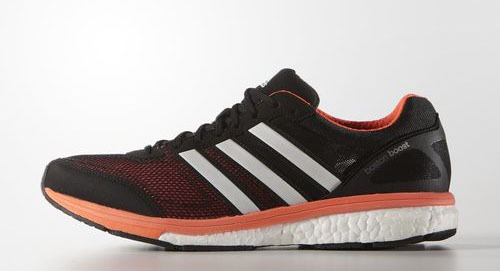
Adidas Adizero Boston 5
"I couldn’t ask for much more in a running shoe. The Boston is back. This time it’s built with adidas’ wildly popular, lively Boost foam in the midsole, and it offers a highly tuned ride that really comes alive when you pick up the pace. Above that, the svelte, highly breathable upper feels fast and race-ready. And that mostly black color scheme says 'all business.' (Tl;dr: This is a running shoe, not a jogging shoe.)" — Adam Elder, managing editor ($120, adidas.com)
View Larger Image
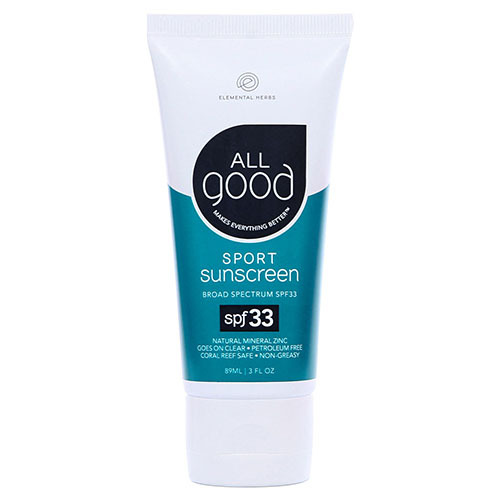
All Good Sport Sunscreen
"I spent most of my youth running around outside and never used a lick of sunblock. In fact, I don’t recall even owning any sunblock until my late 20s. But we’re all smarter now than we were then, at least with the knowledge that spending time in the sun increases the risk of skin cancer. Wearing sunblock is a must for me, but I also don’t want to spread noxious chemicals all over my skin either. The answer? This summer I’ve been using All Good Sport Sunscreen, a smartly formulated SPF 33 sunblock with pure non-nano zinc oxide. It’s one of the most effective sunblock agents (and said to be safe for coral reefs and safe for kids), but what I like most is that it goes on smoothly, doesn’t leave a white residue and remains effective (and doesn’t dissipate) on hot, sweaty long runs. (It also includes organic grape seed juice, organic green tea extract, rose hip oil and shea butter, plus it’s biodegradeable, vegan, hypo-allergenic and paraben- PABA- and GMO-free.)" —Brian Metzler, editor-in-chief ($16, elementalherbs.com)
Competitor.com.
Photos: 2015 Beer Mile World Classic
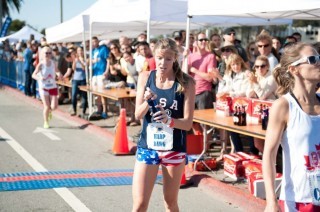
The inaugural Beer Mile World Classic was held on Treasure Island in San Francisco Bay. American Caitlin Judd won the women’s elite title in 6:48.2, while Canadian Lewis Kent won the men’s race in 5:07.7. Check out the action in the elite races captured by photographer Tom Liu below.
RELATED: Caitlin Judd, Lewis Kent Win 2015 Beer Mile World Classic Titles
Photo Gallery
1 of {count}
Back to Start
View Larger Image
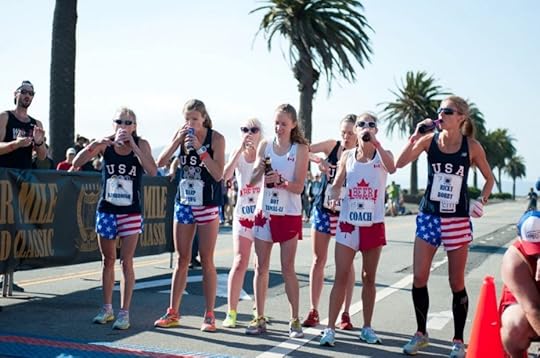
View Larger Image
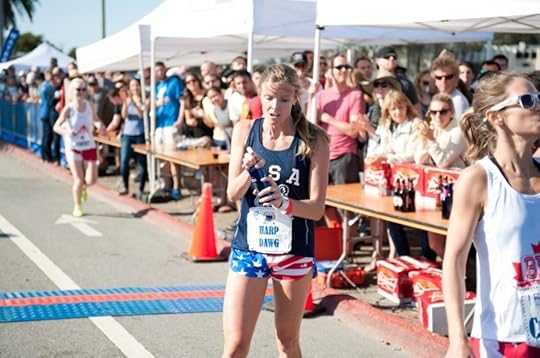
View Larger Image
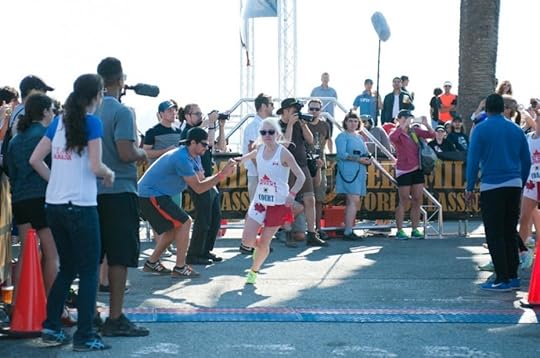
View Larger Image
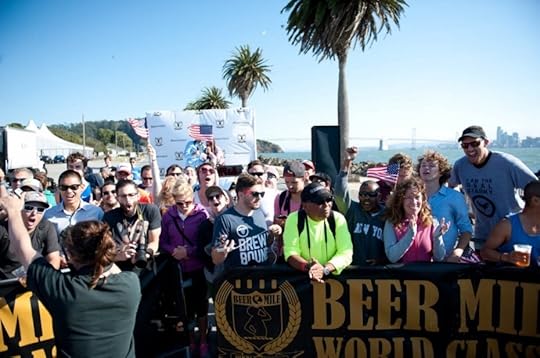
View Larger Image
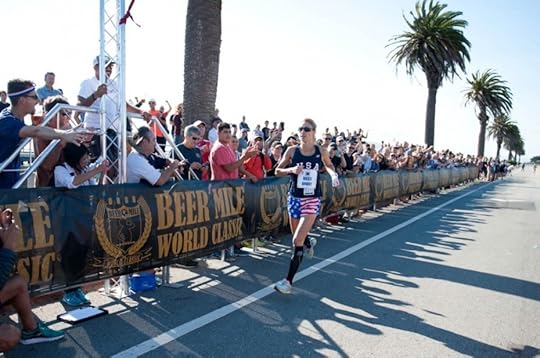
View Larger Image
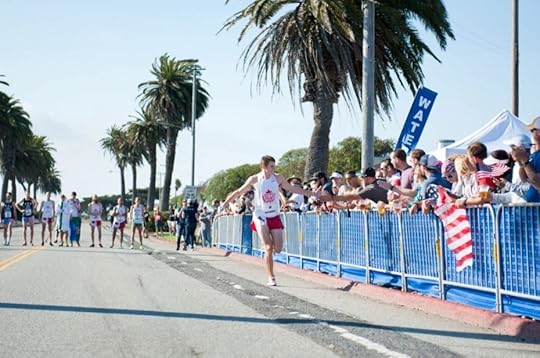
View Larger Image
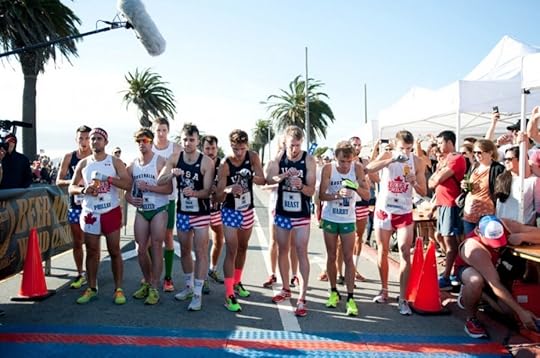
View Larger Image
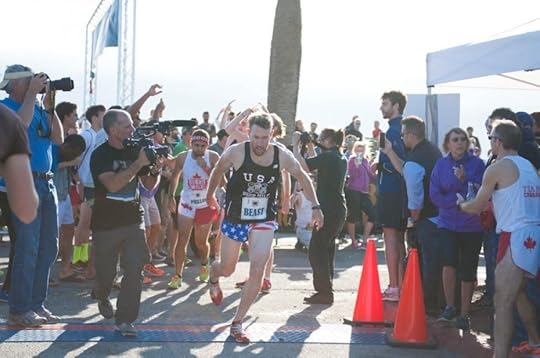
View Larger Image
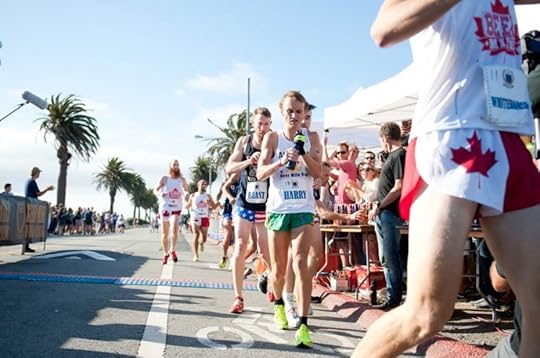
View Larger Image
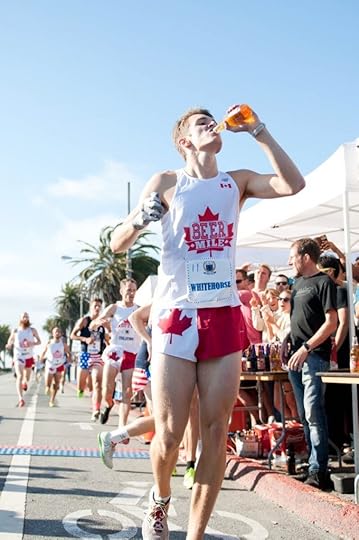
View Larger Image
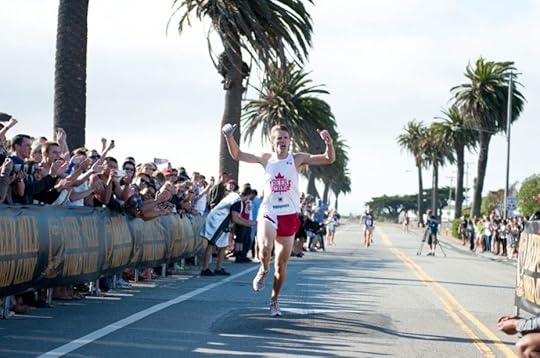

More Galleries
The post Photos: 2015 Beer Mile World Classic appeared first on Competitor.com.
Caitlin Judd, Lewis Kent Win Beer Mile World Classic Titles
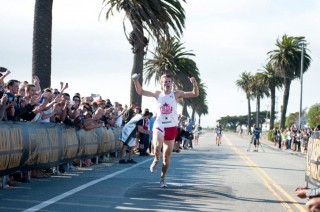
Canadian Lewis Kent celebrates with fans en route to winning the 2015 Beer Mile World Classic on Aug. 22 in San Francisco. Photo: Tom Liu
Part Olympic Games and part Crazy Town, the inaugural World Beer Mile Classic held on Aug. 22 in San Francisco, was to be about “Failing and Failing Miserably…but it may be more fun to watch than to compete,” race organizers recently suggested on its Facebook page.
But some people could not resist the urge to compete. One was Letsrun.com blogger Scott “Slicko” Anderson, a former 1,500-meter runner from Princeton who ran in one of the open heats.
“My brother lives out here, and this was a great excuse to come out and visit him,” said Anderson, who flew out from Washington, D.C. “I saw this beer mile and thought I’d do it. This was always an underground event and it’s great that they have promoted this into a really big event.”
The austere, windswept setting on Treasure Island represented a gathering of the clans, marking the first time most of the best beer milers in the world had the chance to race each other head on. More than 1,000 spectators came to watch victory rise like a Phoenix from the carbonated carnage.
Others were left scratching their heads.
“I don’t know how this is even a sports event,” said bemused San Francisco police officer E. Wu, who was on hand to make sure things went smoothly. “Oh, and be sure to spell my last name correctly,” he quipped jokingly. Or not.
Most of the beer mile’s luminaries came to City by the Bay to gawk, run, chug and party with one another for glory, and most importantly, for fun. And fun was had by all. Prior to the main event, numerous seeded open, masters and sub-elite races transpired—all following the same format of alternately chugging a 12-ounce beer with at least 5 percent alcohol content and running a 400-meter lap around part of the island—and then repeating that sequence three more times—in a riotous combination of competitive versatility, athleticism and debauchery.
Elaborate costumes were more slanted toward nuttiness personified than nattily attired. Among those were patriotically-themed one-piece outfits, silver or gold tights, color-uncoordinated tutus, and lurid super hero capes.
PHOTOS: 2015 Beer Mile World Classic
Getting to the heart of things, one competitor’s plain white T-shirt cautioned “Don’t Trust the Burp!” … aptly citing the event’s principle caveat.
In a number of cases, an ominous gurgling followed by the unwelcome burp preceding vomiting would prevail over self-respect.
“Let’s give him a half-hearted round of applause,” chided the relentlessly cheery PA announcer JT Service to a hapless, puking figure still on the course.
“It’s OK, we think he’ll be OK,” Service’s witty sidekick Josh Muxen added.
Few were spared from their good-natured barbs which riled-up the tipsy, fun crowd.
The combustible combo of endorphins and alcohol colorized the backdrop of the Inaugural Beer Mile World Classic. Individual competition was stoked further by three-man team scoring competitions between squads from Australia, Canada and the U.S. The crowds and competitors grew increasingly restive as the moment of truth—the women’s and men’s elite races—drew near. Fired-up chants of “USA-USA-USA!” with fist-pumping flags rolled across the Great Lawn of Treasure Island as impassioned spectators became fully invested in the moment. Curiously, this element has been somewhat lacking in more traditional track & field events in the U.S.
The beer mile became more official in “about 1989,” when John “The Godfather” Markell first attempted a beer mile as a young college runner for Queens University in Kingston, Ontario, Canada. But he acknowledged informal beer miles had been taking place since the 1950s.
“This used to be an underground event,” said Markell, one of the Beer Mile World Classic’s chief organizers. “We were serious runners but not necessarily going to make Olympic teams. We wanted to do something fun that created a sense of camaraderie after the end of the track or cross country season.”
VIDEO: A Running Store With 20 Beer Taps
Legend has it Markell has survived more beer miles than any living man or beast, and with ex-college teammate Dan Michelak, the veterans helped standardize the Kingston Rules in 1993 (beermile.com/rules). These range from FAT (fully automatic timing) to chug zones, finishing all but less than one shot glass per beer of 5 percent beer from a bottle at the end of each lap.
When Markell moved to San Francisco in 1997, he joined the West Valley Track Club and found he had enthusiastic teammates like Todd Rose, who helped put the beer mile on the map locally.
“With our club, we’ve always had 60 or 70 people just come out to watch,” Markell said.
A perfect storm nurtured by hard work helped this underground event to blossom into an overnight sensation. Markell’s West Valley Track Club teammate, Nick MacFalls, was instrumental getting the word out and generating enthusiastic support from all over the area.
It was not easy. “We had to get something like eight city permits and two insurance battles, but everyone made it happen.” It happened all right.
Throw in some solid pre-game planning among the elites, over a thousand raucous spectators, food trucks, a PA announcer issuing non-stop zingers, lots of beer pressure, and more beer, and the venue resembled Mardi Gras meets track and field, an oddly appealing combination.
At the Aug. 21 press conference held at Markell’s house, competitors shook hands, took photos, ate Mexican food, answered questions and analyzed preferred beer selections and chugging techniques. Some athletes used this opportunity to compare notes and fine-tune their strategies. This included the former women’s world record-holder Chris “The Lament of Insanity” Kimbrough of Portland, Ore., who burst on the scene quickly in 2014.
RELATED: How to Run a Beer Mile
After comparing options with other elites, she tinkered with chugging water out of a can and bottle to see which offered a smoother flow. Once she found the right angle to tip the bottle, she made the switch from can to bottle. How did a mother of three get involved? Easy answer was – she showed talent right off the bat.
“Some friends talked me into doing it when I lived in Austin and I broke the world record (in 6:28), so, it was … beginner’s luck?” she quipped.
Beer mixed with running is a lot more volatile than beer after running so why do it? Well, someone had to.
“Beer is the great equalizer,” said Lewis Kent of Mississauga, Ontario, Canada.
He should know. Kent, aka,“Capeman, The Whitehouse of Ontario,” set the current world record in the beer mile of 4:55.78 on Aug 7.
“Most of us are 4:15 milers going against 3:55 milers but we can drink beer faster and some of us can beat the best runners,” Kent said. “That makes it really fun!”
RELATED: Canadian Lewis Kent Lowers Beer Mile World Record to 4:55.78
The Beer Mile World Classic was the biggest gathering of elite competitors in one race venue to date. (The first beer mile championship event took place last December at the FloTrack Beer Mile World Championships in Austin, Texas, and although it included two-time U.S. 800-meter Olympian Nick Symmonds, it didn’t include quite as deep of a field as this event.)
“This is ridiculously awesome for sure,” said top American competitor James Nielsen (Novato, Calif.), who relished the prospect of facing all of his main rivals in one race. “We usually only know about each other from the Internet, but we don’t get to race each other. It’s great to have a level playing field where we get to race each other and see who’s best.”
The beer mile’s popularity skyrocketed in 2014 when the first sub-5:00 mile was recorded by Nielsen (4:57.1) and Kimbrough set her world mark of 6:28.6. Recently, Nielsen’s mark was broken twice in 14 hours by competitors on two sides of the planet. Nielsen’s record was broken like a bottle of lager by Australian Josh “Harry” Harris, who scorched a 4:56.1 on Aug. 7, and later in the same day, Kent clocked a 4:55.78 on a track in Ontario, Canada.
So now things got serious. There were three beer milers under 5:00, all of them facing each other for the first time, and this was not lost on the general public or in the press. The women’s elite race was also going to be big with Kimbrough headlining the field.
Anticipation continued to build throughout the afternoon as Service’s nonstop chatter started to crest with the sub-elite beer mile event. “These are the sub-elites!’ he scolded. “The reason why they’re sub-elite is because they’re almost so good!”
Strengthening afternoon winds—gusting as high as 25 mph—whipped in from the west, dampening the chances of record attempts, but the elites were fired up to face each head to head. With six competitors and two teams in the field, the elite women went first. Caitlin “Ricky Bobby” Judd from Charleston, S.C., a 31-year-old newlywed, polished off her first beer and opened up a decisive lead she never relinquished. She prevailed in 6:48.2 over Kimbrough (6:59.5) and Lyndsay Harper of Berkeley, Calif. (7:05.6) took third, allowing the American women to sweep the Canadians and win the Queens Cup and team title.
“If you’re not first, you’re last,” Judd said, shaming the rest of the field.
RELATED: 5 Boroughs, 5 Beers During The NYC Marathon
The men’s elite race included 13 competitors, including the fastest three beer milers ever in Harris, Kent and Nielsen. They all went out as a frenzied pack in the first 400-meter loop, but things began to sort out. In lap one, Kent narrowly led hometown favorite Nielsen and Harris. Nielson fell apart uncharacteristically on the back stretch of the second lap, while Kent powered away and the others surged by him.
“It turned out to be a complete disaster,” said an obviously crushed Nieslen.
After the second lap, Kent pulled away from Harris who was rebuked as “The Chunder from Down Under!” by Service over the loudspeaker as he unceremoniously deposited the contents of his beer in the chug zone of his third lap. A fresh-faced Kent went on to an almost effortless victory over his pained competitors littering them in a trail of vomit, unfinished or regurgitated beer and broken dreams, taking the Beer Mile World Classic title to add to his world record in a sizzling time of 5:07.7.
American runner Brian “The Franchise” Anderson, who made the trek from Bloomington, Minn., snared second-place honors in 5:14.7. In hot pursuit for third was Canadian legend and masters (40-49 age group) runner Jim “The Old Gastric Ghost” Finlayson from Victoria, B.C., who ran a cagey race and finished in 5:16.6.
The Canadians won the team title over the U.S. team on the basis of Nielsen’s disqualification. Jeff “Mounty” Mountjoy’s seventh-place finish secured the coveted team victory for the Canucks, giving them the Kingston Cup.
“I’m on top of the world,” said an elated Kent after winning the race. “This means everything to me!”
The post Caitlin Judd, Lewis Kent Win Beer Mile World Classic Titles appeared first on Competitor.com.
August 22, 2015
Mo Farah Retains 10,000m World Title
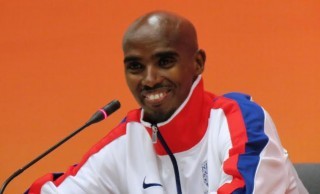
Mo Farah speaks to the press after his victory on Saturday night in Beijing. Photo: David Monti | Race Results Weekly
(c) 2015 Race Results Weekly, all rights reserved. Used with permission.
BEIJING — Despite a valiant team effort by Kenya’s three best 10K runners, Britain’s Mo Farah retained the world 10,000m title he first earned two years ago in Moscow, clocking a fast 27:01.13 in hot, humid and slightly windy conditions. Kenya’s Geoffrey Kamworor, the reigning IAAF World Cross Country and World Half-Marathon champion, finished a fraction of a second behind in 27:01.76 to claim his first global track medal, followed by his compatriot Paul Tanui in 27:02.83. It was Tanui’s second consecutive bronze medal at these championships.
Once again Farah, 32, used his superior closing speed to claim victory. He finished the race with a blazing 2:28.81 final kilometer, topped by a 54.2-second final lap, despite a slight stumble just after the bell.
“I’ve never run 27 minutes in a championships,” Farah told reporters, marveling at the strong pace in such challenging conditions.
RELATED: Ghirmay Ghebreslassie Wins Marathon World Title
The Kenyans saw their best chance for victory tonight by working together to maintain a high pace, hoping to take the sting out of Farah’s kick. Kamworor, Tanui and their teammate Bedan Karoki worked together lap after lap to try to wear Farah down. Kamworor did most of the leading, running consistent 64 to 65-second laps.
“Not often you see three guys in the same country where, you know, where each one was sacrificing their own medal,” Farah observed. “They were working as a team. Someone had to miss out.”
Farah was as far back as 13th position at 3000m, but was clearly not in distress. He gently worked his way up to seventh position at 5000m (13:42.01), just one place behind his American training partner Galen Rupp.
“Before the pace picked up, I stopped for water and poured it over my head, and then from there I just stayed relaxed and calm,” Farah commented to British Athletics interviewers.
In the sixth kilometer, only five athletes remained in contention for a medal: Kamworor, Tanui, Karoki, Farah and Rupp. That group stayed together through the penultimate lap when Farah finally took the lead. Kamworor responded immediately, getting right on Farah’s heels, who stumbled briefly. It was still any man’s race with 200 meters to go, but Farah blasted away from his flagging rivals in the homestretch to secure the win.
“The last lap, that was close,” Farah admitted. “I honestly thought I was gone because I stumbled.”
Rupp wasn’t able to stay with the the three medalists in the final lap, and finished fifth behind Karoki in 27:08.91, a time which would have won the world title on ten previous occasions. Despite running such a quick time, Rupp was clearly disappointed and only spoke briefly with the media.
“I’m disappointed not to finish the top three,” Rupp said softly, his eyes lowered. “That’s the way it goes sometimes.”
Kamworor appeared satisfied with his effort, and would turn his attention to training for the TCS New York City Marathon in November.
“For me I’m happy about second position,” Kamworor told reporters. “Of course, I was targeting to win. I was trying the best that I could. But, it was unfortunate that I did not win.
For Farah, these championships are far from over. He’ll line up for the first round of the 5000m on Wednesday, the first step in trying to win his third consecutive title at that distance.
“I’ve got three days to recover, so we’ll see,” Farah said.
The post Mo Farah Retains 10,000m World Title appeared first on Competitor.com.
Photos: 2015 IAAF World Championships—Men’s Marathon
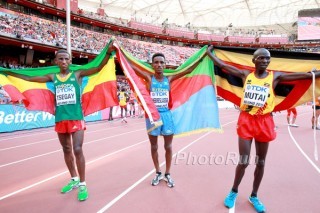
Eritrean Ghirmay Ghebreslassie, all of 19 years old, became the youngest-ever world marathon champion on Saturday at the IAAF World Championships in Athletics in Beijing, China. He crossed the finish line in 2 hours, 12 minutes and 28 seconds to become Eritrea’s first ever world champion. Yemane Tsegay of Ethiopia took silver and Uganda’s Solomon Mutai grabbed bronze. Ian Burrell was the top American finisher in 25th, running 2:23:17. Scott Smith of Flagstaff, Ariz., was 28th in 2:24:53.
RELATED: Ghirmay Ghebreslassie Wins Marathon World Title
Check out these photos from the race from PhotoRun.net.
Photo Gallery
1 of {count}
Back to Start
View Larger Image
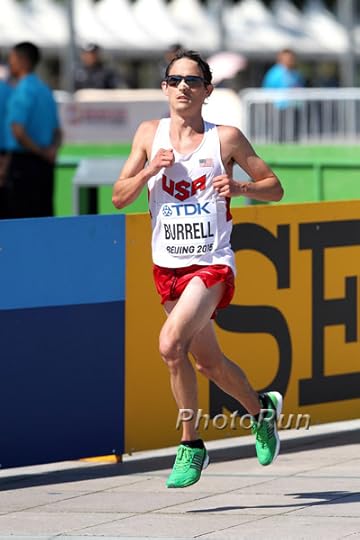
2015 IAAF World Championships
View Larger Image

2015 IAAF World Championships
View Larger Image
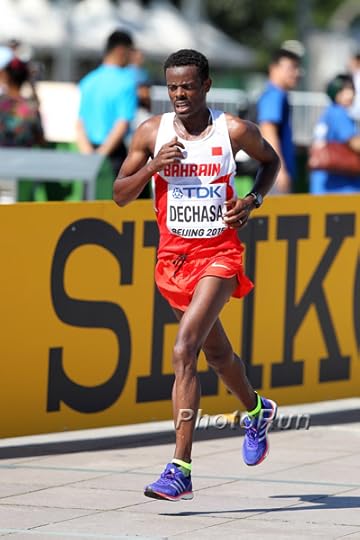
2015 IAAF World Championships
View Larger Image

2015 IAAF World Championships
View Larger Image
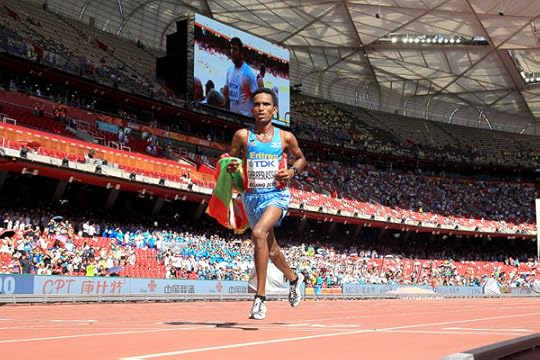
2015 World Outdoor Championships
View Larger Image
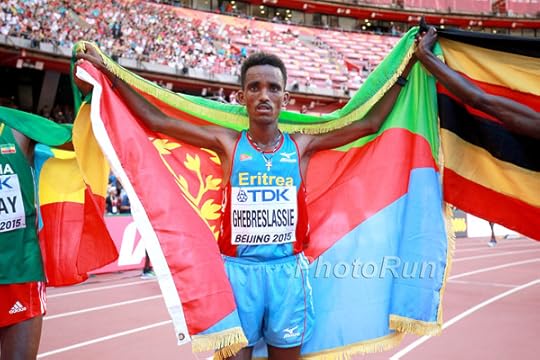
2015 World Outdoor Championships
View Larger Image
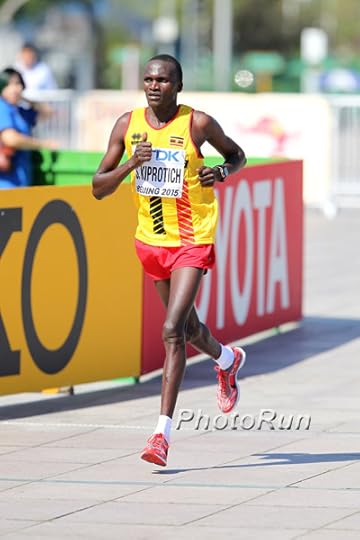
2015 IAAF World Championships
View Larger Image
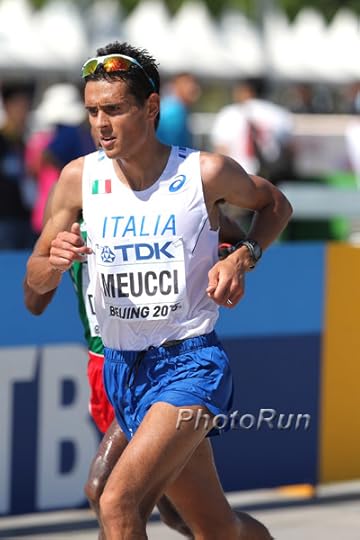
2015 IAAF World Championships
View Larger Image
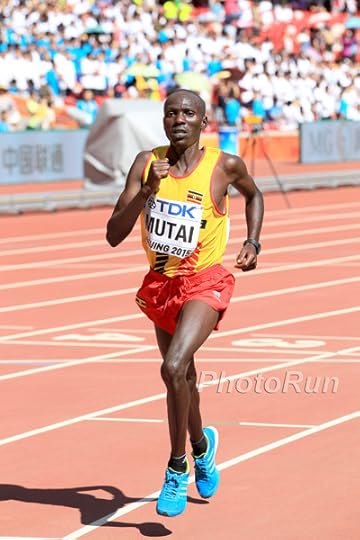
2015 World Outdoor Championships
View Larger Image
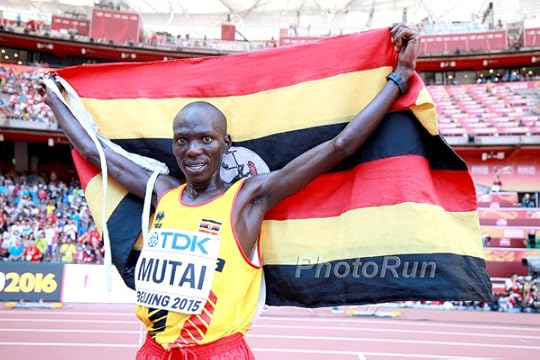
2015 World Outdoor Championships
View Larger Image
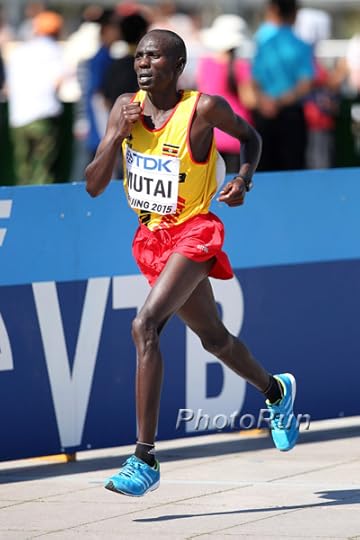
2015 IAAF World Championships
View Larger Image
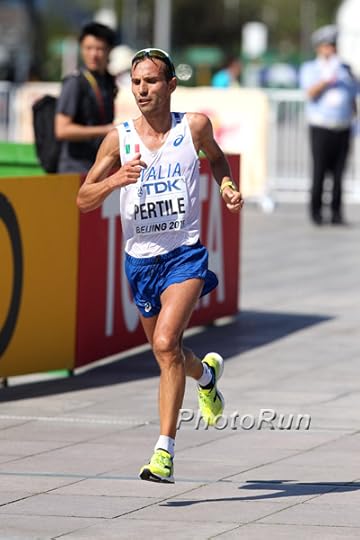
2015 IAAF World Championships
View Larger Image
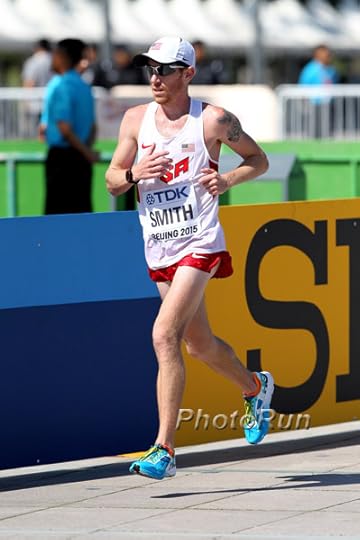
2015 IAAF World Championships
View Larger Image

2015 IAAF World Championships
View Larger Image
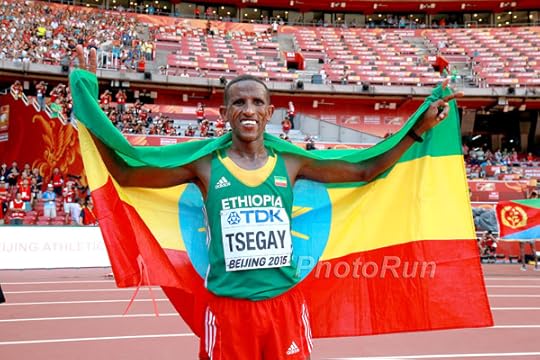
2015 World Outdoor Championships
View Larger Image
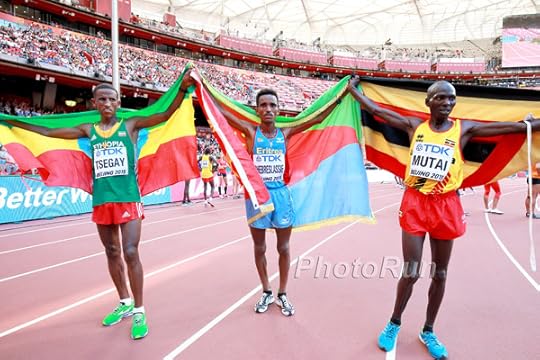
2015 World Outdoor Championships
Related Galleries
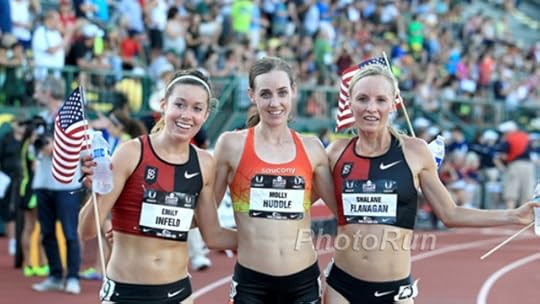
13 Great Storylines at the 2015 World Track & Field Championships
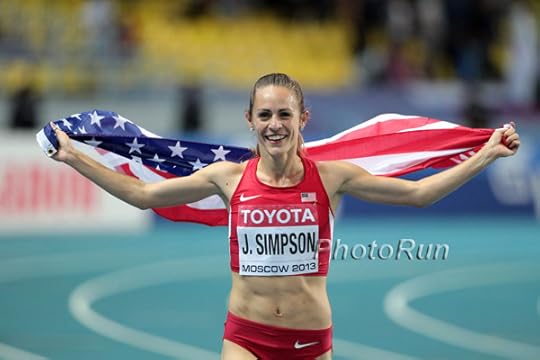
Photos: U.S. Middle Distance & Distance Highlights From World Championships

Photos: A Glimpse At Jenny Simpson’s Career

More Galleries
The post Photos: 2015 IAAF World Championships—Men’s Marathon appeared first on Competitor.com.
August 21, 2015
Eritrea’s Ghirmay Ghebreslassie Wins World Championships Men’s Marathon
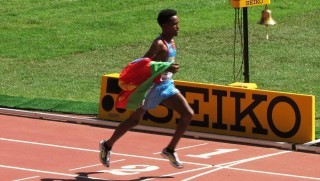
Photo: David Monti/Race Results Weekly
(c) 2015 Race Results Weekly, all rights reserved. Used with permission.
BEIJING — The 15th IAAF World Championships in Athletics got off to a shocking start here as a plucky teenager from Eritrea, Ghirmay Ghebreslassie, became the youngest-ever world marathon champion at 19 years old. Running in only his fourth marathon—two of which he had failed to finish—he won the first-ever gold medal at these championships for Eritrea, crossing the finish line in National Stadium in 2:12:28. The silver medal went to Ethiopian veteran Yemane Tsegay and bronze to Uganda’s Solomon Mutai.
Ghebreslassie, who finished second at last April’s Haspa Marathon Hamburg in a career best 2:07:47, came into these championships as a top-10 prospect, according to his manager Jos Hermens. But victory wasn’t in the cards.
“This was his second full marathon,” Hermens told Race Results Weekly after the race (he had run as a pacemaker in Chicago last October and had dropped out of Dubai last January). “To be honest, we didn’t expect him to win.”
Ghebreslassie benefited by conserving energy and staying behind in the first half of the race while other athletes surged, only to be brought back. Off of a slow early pace—just 16:06 at 5K—the surging began, first by Mongolia’s Ser-Od Bat-Ochir, then the Italian pair of Daniele Meucci, the reigning European champion, and his 41 year-old teammate, Ruggero Pertile. The Italians led the race through 20K (1:03:23) and 25K (1:19:16). Ghebreslassie was seven seconds back in 10th place running with the pre-race favorites Wilson Kipsang (reigning TCS New York City Marathon champion) and Dennis Kimetto (world record holder) of Kenya, Stephen Kiprotich of Uganda (the defending champion) and Lelisa Desisa (two-time Boston Marathon winner) of Ethiopia among others.
After 25K, the race’s biggest surge came from unheralded Tsepo Ramonene of Lesotho. He shot ahead of the field, and within a few kilometers had a lead of nearly 30 seconds, a lead that would stick all the way through 35K.
Behind Ramonene, the race had completely fallen apart as the sun got hotter and the winds stronger. Both Kimetto and Kipsang had dropped out. Desisa was with Kiprotich 23 seconds back, and the reigning Boston and World Championships winners were struggling.
“Today wasn’t my day,” Kiprotich told Race Results Weekly after eventually finishing sixth. “I tried and tried, but was not good enough.”
Ghebreslassie said he wasn’t worried and was sticking to his race plan.
“I decided to leave the group at 34K,” he told reporters, just one kilometer earlier than planned. “That is what I expected when I came (to Beijing).”
Step by step, Ghebreslassie was catching up to Ramonene, and with 1:53:15 on the race clock, he passed him with authority. Little did he know that his biggest battle was still to come. Tsegaye was closing on him, and at about 38-kilometers he passed him. But Ghebreslassie struck back, immediately retaking the lead. Tsegaye didn’t realize that the heat wasn’t bothering his Eritrean rival.
“I’m more experienced with this weather,” Ghebreslassie told reporters. “Today, the weather was very nice for me.”
Tsegaye, who said he did dedicated heat training, wasn’t as lucky.
“Yes, I have experience but sometimes race is difficult,” Tesgaye said. “After 35 kilometers, I had a stomach problem and I didn’t go with him.”
Under two minutes later, Ghebreslassie would take the lead for good. Coming into National Stadium alone with an Eritrean flag draped over his arm, he ran right through the finish line, not realizing that the athletes did not have to run a full lap of the stadium. Officials told him to stop.
“I’m not sure,” said Ghebreslassie of the finish line’s location. “I’ve never finished in a stadium before.”
Pertile was rewarded for the effort he put in early in the race, finishing a surprising fourth in 2:14:23. His teammate Meucci had stomach trouble and was forced to make a toilet stop which he said cost him a minute and a half. He finished eighth in 2:14:54.
Ghebreslassie revealed today that his family wanted him to concentrate on school and not go into athletics.
“When I start to show my achievements in athletics they followed me,” he said. “They started to believe I can make special history for Eritrea.”
RELATED: 13 Great Storylines at the 2015 World Championships
The post Eritrea’s Ghirmay Ghebreslassie Wins World Championships Men’s Marathon appeared first on Competitor.com.
Ryan Hall's Blog
- Ryan Hall's profile
- 21 followers



